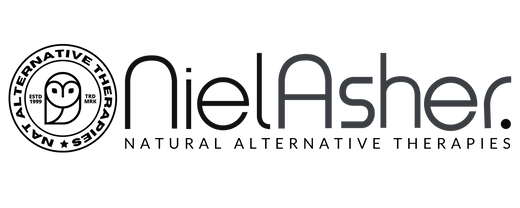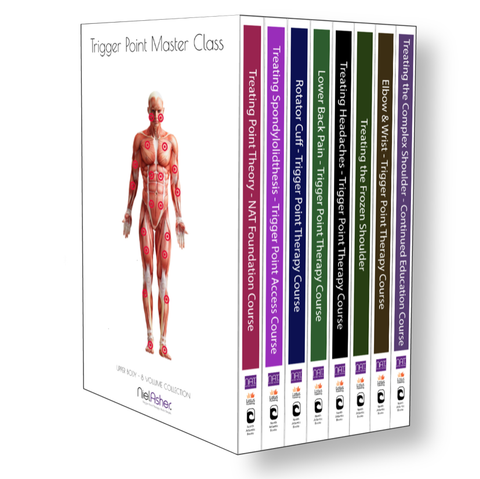Treating Migraine Headaches - Trigger Point Therapy

The "Spider Technique" for Treating Migraines
Migraine is a neurological disease characterized by recurrent moderate to severe headaches
A migraine headache is described as a throbbing, pounding, or pulsating pain and is often associated with specific and characteristic autonomic nervous system (ANS) symptoms.
Typically, headache affects half of the head (hemicranial) but may occur on both sides or oscillate from side to side.
Migraines generally last from 2 to 72 hours. The pain can be made worse by movement, coughing, straining, or flexing the head.
Symptoms
Associated symptoms may include nausea, vomiting, and sensitivity to light, sound, or smell. The pain is generally made worse by physical activity.
Up to one-third of people with migraine headaches perceive an aura - a transient visual, sensory, language, or motor disturbance that signals that the headache will soon occur (aura).
A migraine without an aura (common migraine) may be preceded by mental fuzziness, mood changes, fatigue, and an unusual retention of fluids.
Occasionally, an aura can occur with little or no headache following it.
Temporalis Trigger Points are often associated with Migraine
Causes of migraines
According to the ‘Migraine Trust’, the exact cause of migraine is not fully understood.
Migraine has long been observed to run in families (about two-thirds of cases) so it is thought that there is a genetic component.
In fact, recent research has identified genes for rare types of migraine.
Genetics
People who get migraines may have certain abnormal genes that control the functions of specific brain cells.
Current research is focused around the notion that people who have migraine have a hyper sensitive or ‘hyper- excitable’ cortex as a result of aberrant neurones in the trigeminal cortex of the brainstem.
The implications are that the sensitivity threshold is lower in this group than the normal population.
This degree of sensitivity is possibly genetically determined, influencing the threshold for triggering attacks.
The trigeminal nerve is long and has a cervical branch that loops all the way down to C3.
En-route the nerve puts out branches that supply the joints, discs, ligaments and arteries. It has been suggested that any of the structures in these areas as well as muscular trigger points in the region may contribute to this ‘input’.
Migraine symptoms are also thought to be due to abnormal changes in levels of substances that are naturally produced in the brain.
Until fairly recently it was a commonly held view that an alteration in chemical substances such as serotonin and other vaso-stimulatory neurotransmitters affected the blood vessels in the brain (vascular system input), causing them to become inflamed and swollen, resulting in a migraine headaches.
However, changes in blood vessels are now thought to be secondary to more important changes in brain chemistry.
Triggers
We do know that people with migraines react to a variety of factors and events.
These "triggers" can vary from person to person and don’t always lead to migraine. A combination of triggers — not a single thing or event — is more likely to set off an attack and each persons response to triggers can vary from migraine to migraine.
The four stages of migraine
Typically migraines go through four distinct phases:
1. The prodrome, which occurs hours or days before the headache (60%)
2. The aura, which immediately precedes the headache visual disturbance (99%), sensory effects (50%) lasting for about an hour
3. The pain phase, also known as headache phase. Classically throbbing with moderate to severe pain and aggravated by physical activity. Frequently associated with nausea and vomiting, photophobia, phonophobia and sensitivity to smell. Swelling or tenderness of the scalp may occur as can neck stiffness.
4. The postdrome - the effects experienced following the end of a migraine attack.
The effects of migraine may persist for some days after the main headache has ended.
The patient may feel tired or ‘hung over’ and have head pain, cognitive difficulties, gastrointestinal symptoms, mood changes, and weakness.
Trigger Points and Migraine
Studies have identified the connection between migraine and trigger points.
In one recent study (Calandre), trigger points were found in 94% of migraines.
The number of individual migraine trigger points varied from zero to 14, and was found to be related to both the frequency of migraine attacks, and the duration of the disease.
Approximately 75% of the total detected trigger points were found in temporalis and/or suboccipital (obliquus capitis) areas.
Other locations were mainly found in patients showing more than four trigger points and included the orbicularis occuli and occipitofrontalis.
Links
Find a Trigger Point Professional in your area
More Articles About Trigger Points
Certify as a Trigger Point Therapist
About NAT Courses
As a manual therapist or exercise professional, there is only one way to expand your business - education!
Learning more skills increases the services that you offer and provides more opportunity for specialization.
Every NAT course is designed to build on what you already know, to empower you to treat more clients and grow your practice, with a minimal investment in time and money.
Help Desk
About Niel Asher Education
Niel Asher Education is a leading provider of distance learning and continued education courses.
Established in the United Kingdom in 1999, we provide course and distance learning material for therapists and other healthcare professionals in over 40 countries.
Our courses are accredited by over 90 professional associations and national accreditation institutions including the National Academy of Sports Medicine (NASM) and National Certification Board for Therapeutic Massage and Bodywork (NCBTMB). Full details of all international course accreditations can be found on our website.
Printed course materials and other products offered on our websites are despatched worldwide from our 3 locations in the UK (London), USA (Pennsylvania) and Australia (Melbourne).
More About Us
NAMTPT AWARD 2017
We are honored to have received the 2017 "Excellence in Education" Award from the National Association of Myofascial Trigger Point Therapists.
Since 1999 Niel Asher Education has won numerous awards for education and in particular for education and services provided in the field of trigger point therapy.
Read Full Article
Award Winning Instructors
Niel Asher Healthcare course instructors have won a host of prestigious awards including 2 lifetime achievement honorees - Stuart Hinds, Lifetime Achievement Honoree, AAMT, 2015, and Dr. Jonathan Kuttner, MD, Lifetime Achievement Honoree, NAMTPT, 2014.
Meet the Instructors
Accreditation

If you are a qualified/licensed manual therapist or exercise/fitness professional you can expand your credentials with NAT certification.
In addition to national accreditation for continued education, each course that we offer includes "NAT Learning Credits". By taking and completing courses you can accumulate NAT credits to qualify for NAT certification.
There are currently 3 levels of NAT certification. Certifying NAT is a valuable way to show your clients that you take continued education seriously, and to promote your skills and qualifications.
Most of our courses are accredited for CE/CPD/CPE. A full list of CE accreditations can be found by clicking on the link below.
About NAT Certification
Niel Asher Technique
Since 1999 the Niel Asher Technique for treating trigger points has been adopted by over 100,000 therapists worldwide, and has been applied to the treatment of a number of common musculoskeletal injuries.
The Niel Asher Technique for treating frozen shoulder was first introduced and published in 1997 and has been widely adopted by therapists and exercise professionals working within elite sports and athletics.
Read More
International Students
Most of our courses are available as either "Printed" or 'Download" editions, wherever you live. Internet connection is required to access online and downloadable material.
When you purchase a download edition, you receive immediate lifetime access to all course material. Course texts can be downloaded and printed if required.
When you purchase a "Printed" edition, you will also receive free access to the download edition.
We ship Worldwide from locations in the USA, UK, and Australia. Most items are despatched within 24 hours and shipping is FREE for all orders over US$50.
Shipping
Where to Start?
We offer a range of over 50 courses, presented by some of the worlds leading manual therapists. All courses are reviewed annually, and new courses are regularly added.
Our courses are modular, and designed to build on what you already know. For more information, please visit our "Where to Start?" page.
Start Here
Trigger Point Therapy Master Course

Ready to take your practice to the next level?
Explore which continuing education course is right for you.















